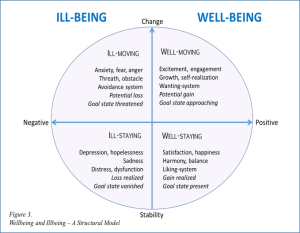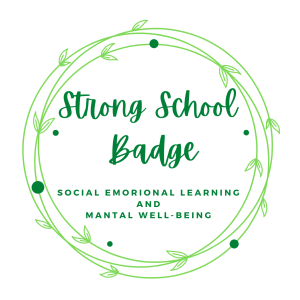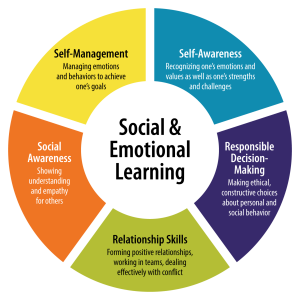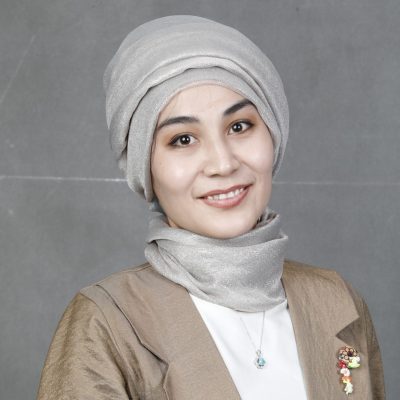Inclusion, Well-being and Community Building
10 Social Emotional Learning and Mental Wellbeing
LEARNING OBJECTIVES, Introduction, Components of SEL - 5 components, PILLARS OF SEL - Three Pillars, Childhood Development and SEL, MENTAL WELLBEING AND TRAUMA NAVIGATION/HEALING, Conclusion, Review Questions, Mental Health Check In Activity, Key Terms
Alizeh Sultan; Sawdah Rubai Bente Hoque; and Khurshid Arif
Learning Objectives
After reading this chapter you will be able to
- Define Social Emotional Learning (SEL)
- Discuss the importance of SEL in schools.
- Identify and deal with challenges faced by students and educators in school settings
- Learn about and apply conflict resolution and mediation.
- Effectively promote SEL in school
- Navigate the Teacher-Student-Parent dynamic
- Utilize SEL to ensure the mental well-being of students.
- Train stakeholders to increase safety in schools.
Abstract:
Social-Emotional Learning and Well-being is not only an emerging research agenda, but also a critical issue concerning the individual as well as societal development, because how the issue is viewed has huge theoretical as well as practical, and even vital implications. Many programs have been developed to help schools enhance students’ health and reduce trauma, bullying, violence, and ill-being. This chapter describes the importance of social-emotional learning (SEL) in school, the components and pillars of SEL, and defines well-being and ill-being. It also talks about conflict resolution in schools, mediation in schools, the teacher-student-parent dynamic, childhood development, and trauma navigation. The SEL framework can be used to guide teachers in schools and parents outside of the schools to deal with problems caused by ill-being (mental illness) trauma and violence, and use mental health (mental well-being) to teach social-emotional learning.
Introduction
Social and emotional learning (SEL) aims to help students better understand their thoughts and emotions, become more self-aware, and develop more empathy for others in their community and the larger world takes these differences into account and helps put all students on an equal footing to succeed. SEL is the process by which children and adults regulate their emotions, set goals, demonstrate empathy, build and maintain healthy relationships, and make constructive choices (CASEL, 2022). Nowadays students frequently meet people for the first time in the classroom who come from various backgrounds, hold different opinions, and have unique abilities. It can be difficult for students to adapt to a new and diverse community, to feel at home there, and to show respect and understanding of people with different viewpoints and values. Social and emotional learning (SEL) aims to help students better understand their thoughts and emotions, become more self-aware, and develop more empathy for others in their community and the larger world takes these differences into account and helps put all students on an equal footing to succeed. SEL is the process by which children and adults regulate their emotions, set goals, demonstrate empathy, build and maintain healthy relationships, and make constructive choices (CASEL, 2019). Recently, an increasing number of educational institutions are realizing that competence in socio-emotional development and academic performance are closely intertwined. 7.4% of American children between the ages of 3 and 17 have been diagnosed with a behavioral problem, which means that at least two students in a class of 30 would benefit from positive reinforcement if they had behavioral issues (Banks, 2022). In addition to student education, educational institutions are now regarded as “an important if not central arena for health promotion and primary prevention” (Roeser, 2000).
SEL is a methodology that teaches students of all ages how to better understand their emotions, feel them fully, and show empathy for others. These learned behaviours are then applied to assist students in making positive, responsible decisions, developing frameworks for achieving their goals, and developing positive relationships with others. SEL should be included in the school curriculum because it improves the quality of education at schools as it improves the school & class environment, reduces behavioral problems, and boosts the academic achievement of students. SEL with an integrated, coordinated approach not just teaches children how to pass exams, but also teaches them how to develop life skills and deal with social challenges. SEL helps students maximize their potential in school, but also throughout their lives. A meta-analysis of 213 school-based, universal social and emotional learning (SEL) programs involving 270,034 kindergartens through high school students found that students significantly improved their social and emotional skills, attitudes, behavior, and academic performance, resulting in an 11-percentile-point increase in achievement (Durlak et al., 2011). By incorporating SEL into the school curriculum, students will learn how to control their emotions and behaviors in order to reduce stress. Some of these skills can assist children in self-regulating when they are required to do so independently. In order to find solutions, they will sometimes be better able to communicate their thoughts and feelings to others. According to Durlak et al. (2011), the four components of SAFE—active learning, focused activities to develop one or more social skills, sequenced activities that lead to skills in a coordinated and connected way, and explicit targets regarding specific skills—are present in the most successful SEL programs. Teachers who use SEL curricula ensure that high expectations are communicated to students by eliciting their thoughts, displaying model work, providing specific feedback to spur improvement, and emphasizing that making mistakes is an important part of learning (Paterson, 2021).
Social Emotional Learning: What is SEL and Why SEL Matters – Video
Components of Social-Emotional Learning (SEL):
There are many components to SEL but most literature states 5 key components. they are –
Figure: Five main components of social-emotional learning (MLSD, 2022).
Self-Awareness:
Self-awareness is a conscious awareness of one’s own strengths, weaknesses, actions, and presence. Self-awareness necessitates a clear understanding of your mental and emotional states. Recognizing your emotions and how they influence your behavior; recognizing your strengths and weaknesses in order to gain confidence in your abilities.
According to a research team Greater Good in Education (n.d.) from University of California, Berkeley, skills that develop self-awareness include:
- Identifying and analyzing one’s emotions, and how they affect others
- Understanding the relationship between one’s emotions, thoughts, values, and behaviors
- Integrating personal and social identities
- Identifying personal, cultural, and linguistic assets
- Demonstrating honesty and integrity
- Examining prejudices and biases
- Experiencing self-efficacy
- Having a growth mindset
- Developing interests and a sense of purpose
Self-Management:
Self-management consists of setting and achieving goals, as well as taking responsibility for your thoughts, emotions, and actions in various situations. Self-management is built on self-awareness. If students can accurately pinpoint their feelings and how they influence their behaviors, they will be better able to act on them. It can be very empowering to assist them in developing their capacity to manage their emotions and behavior.
Social Awareness:
Social Awareness is the ability to put yourself in the shoes of another person who comes from a different background or culture than you. To act with empathy and integrity in your home, school, and community. Recognizing others, understanding the perspectives of others, and empathizing with them, including those from diverse backgrounds, cultures, and contexts, is what social awareness is all about.
Relationship Skills:
Relationship skills are the ability to form and maintain healthy relationships with people from various backgrounds. This competency focuses on knowing when to ask for or offer assistance, listening to others, and communicating with them. Students who participate in SEL learn how to handle conflicts in their relationships more effectively, making it easier for them to maintain their friendships (Banks, 2022). Because of their problem-solving abilities, they can work in groups and even enjoy teamwork in the classroom.
Responsible Decision-Making:
Responsible decision-making refers to the ability to decide how to appropriately act or react in a given situation based on learned behaviors such as ethics, safety, weighing consequences, and the welfare of others as well as yourself. To make responsible decisions, students need to develop critical thinking, open-mindedness, sound judgment, reason, problem-solving, and solution-finding skills. They need to think about others as well as themselves when making decisions.
Other components that are important to keep in mind (especially for school children) are –
Stress Management:
People of all ages, particularly children, are affected by trauma and stress. According to a 2014 American Psychological Association study, many teenagers have even higher stress levels than adults. Stress management is tools, strategies, or techniques that help you feel less stressed and lessen the negative effects of stress on your mental or physical health. There are numerous techniques for dealing with stress. These techniques include behavioral, emotional, and mental ones. The first step in assisting your students in overcoming their stress is to comprehend what is causing it. Peer pressure, abuse, and familial expectations can all have an impact on your student’s mental and emotional well-being. Stress management in the classroom necessitates consistent effort. A teacher’s creativity and patience are frequently required. To reduce classroom tension, incorporate these strategies into your lesson plans.
Conflict Resolution and Mediation:
There will always be disagreements between children, no matter how minor. For example, during recess kids can argue about anything, whether it’s a toy or another student. Conflict resolution techniques can be used in the classroom to keep the peace among the students. Peaceful conflict resolution refers to working through a problem or conflict in an early childhood setting in a way that does not negatively impact anyone involved on a physical, emotional, or social level. When disputes are settled amicably, children can gain confidence in their ability to handle situations and relationships. Teaching young people how to navigate conflict is one of the most important components to facilitate their growth. Even some adults have poor meditation skills and can’t navigate their professional and personal life properly. When we’re so angry that we can’t think straight, it’s difficult to solve a problem. This is why teaching young people from an early age to resolve conflicts and how to overcome their negative emotions and act accordingly is of utmost importance. Although Mediation is frequently described as a win-win process, with a focus on reaching a mutually satisfactory conflict resolution, the research shows that there are additional and possibly larger benefits for students who facilitate mediation as well as the school community as a whole (DeVoogd, 2016). Teaching students to get some perspective and put themself in the other person’s shoes and think beyond just one incident is crucial. It is important to build their listening and problem-solving skills through conflict resolution.
Conflict resolution is an important personal skill and in schools, the role of peer mediation in conflict resolution is also important. Mediation is an important method that requires focus, an open mind, and the willingness to compromise. Both parties in a conflict need to give work towards a solution with respect in order to not waste time and reach a satisfactory solution. And having a mediator to help with conflict resolution is a good way to ensure that. The researcher DeVoogd (2016) states that “Student mediators also demonstrate better attendance than non-mediators and report feeling safer and more connected in positive ways to their school, with a sense of belonging.” This shows that mediation training and being mediators, in general, is useful. But we should also give more importance to building each individual student’s conflict resolution skill than just having some students in the role of mediators. Teaching students to get some perspective and put themself in the other person’s shoes and think beyond just one incident is crucial. It is important to build their listening and problem-solving skills through conflict resolution.
Here is a video that will explain the importance of SEL in our Children’s and Adult life.
PILLARS OF SEL – Three Pillars:
Social and emotional learning (SEL) is a term that broadly refers to the process through which people learn and put into practice a variety of social, emotional, and associated skills, attitudes, behaviours, and values that assist guide pupils. This involves having ideas, emotions, and behaviours that help people do well in school. But SEL has been described in a number of different ways (Humphrey et al., 2011). In today’s increasingly diverse world, children frequently meet people for the first time in the classroom who come from a variety of different origins, have diverse ideas, and have special talents. Social and emotional learning (SEL) aims to assist students in better understanding their thoughts and emotions, growing in self-awareness, and developing more empathy for others in their community and the wider world in order to take into account these differences and help put all students on an equal footing to succeed. These skills can be fostered in the classroom to help kids become stronger, more effective, self-conscious, and socially aware citizens in the years to come. Learn more about the significance of social-emotional learning and the advantages it has in the classroom and outside of it.
Here we discuss the three pillars of the SEL which are Culture, Adult Skills, and Curriculum.
- Culture
From a cultural perspective, the kind of skills associated with SEL seems to be based on a theory of emotions that views them as internal, individual states that call for active management control in order to be channeled in socially beneficial, healthy ways. The main focus is on controlling or containing emotions that can “boil over,” leading people to behave irrationally (Lakoff & Kovecses, 1987). The SEL literature frequently suggests verbalization or visualization methods that involve verbalizing feelings, using visualization techniques, or engaging in breathing or counting activities. Children in the primary grades should be able to recognize and appropriately label simple emotions such as sadness, anger, and happiness, according to CASEL’s (2007) assessment of essential skills in emotional identification, labeling, and discussion. Students must “recognize and appropriately describe emotions and how they are linked to action [as well as] use language skills to understand other people’s thoughts and perspectives,” such as being able to employ “I messages” while discussing feelings, according to Illinois state requirements (Illinois State Board of Education, 2006). Another part of connection skills is that “students should be able to describe ways to make and keep friends” (CASEL, 2007). The norms surrounding emotional expression, emotional experience, and emotional regulation are, however, strongly conditioned by culture, as research on emotion in non-Western cultural contexts has long demonstrated (Briggs, 1998; Chao, 1995; Lutz, 1987, 1988; Markus & Kitayama, 1994; Miller, 1982, 1996; Shweder & LeVine, 1984; White, 1987). Not all cultures share the same regulatory or expressive behaviors (like talking) of the White, American middle class, nor do they interpret emotional experience in the same ways (see also Ballenger, 1992). According to Wierzbicka (1994), the Anglo script for emotional expression places a significant focus on behavioral control and the notion that speaking about one’s emotions qualifies as adequate expression, in contrast to other cultural scripts for this purpose (p. 178). She makes a compelling case for the cultural influences on the relationship between emotion and language in ways that directly contradict the universalizing assertions of a lot of psychology research on emotions in cognition. In addition to stressing the need for SEL training to be “culturally relevant, empowering children within their own cultural surroundings,” Denham and Weissberg (2004) also raise the potential that “some SEL categories may be unique to the child’s home culture” (p. 41).

figure: Multiculturism ( Language on the move, 2022).
- Adult Skills
Any classroom in the world, from the most basic, without walls, to the most complex, needs good relationships between teachers and students in order for learning to occur. The combination of skills that enables kids to collaborate with others, study effectively and play vital roles in their families, communities, and workplaces are known as social-emotional skills or “emotional intelligence.” According to research, social and emotional learning can be taught to pupils, and their presence in classrooms and schools enhances academic performance. Students are more likely to retain and apply what they are taught when academic and social-emotional learning are both incorporated into the educational process. Additionally, they weave into their education a sense of accountability, compassion, and interest in the welfare of others as well as their own. Thus, learning can be said to affect both the “brain” and the “heart,” which leads to better-run classrooms and motivated students. Therefore, academic and social-emotional learning are intertwined in every school, everywhere.
- Curriculum
SEL can be incorporated into a school’s curriculum even though it is not a defined subject like math or history. Students may be more likely to participate and may be less prone to mentally drift off during their classes when teachers personalize and relate academic topics to them, National University(2022) . SEL can have a beneficial lifetime influence by encouraging self-awareness, empathy, and emotions of safety and inclusion in the classroom. SEL is approached from various angles. A more formally specified period of the school day, sometimes taught in homeroom, is devoted to SEL by certain teachers. To help students better understand the SEL basic skills, these lessons are repeated throughout the rest of the school day.
In order to foster a sense of community or common ground between students of different ages, teachers may choose to assign students to write or journal about their thoughts and feelings regarding a certain SEL topic National University (2022). Other teachers incorporate SEL teachings into topics that are more formal, like math, history, or literature. As an example of SEL in action, assigning a group project where students self-delegate roles to work together for the benefit of the group, having students role-play historical figures to comprehend the motivations behind their actions, or having students conduct formal interviews with one another to gauge current events are all examples of SEL in action, National University (2022).

figure: (positiveaction.net, 2022)
Childhood Development and SEL
SEL in the context of daily classroom instruction includes daily check-ins with students, embedded SEL content in the Reading and English Language Arts, and general awareness of the social well-being of students in their virtual/classroom environment (even if only with a simple greeting enquiring about their emotional state upon arrival to the class or an inquiry regarding the previous evening). According to a study by Babalis et al. (2013), SEL definitely affects primary school pupils’ emotional competence and academic achievement. Another study by Cook (2014) found that school culture and practices hinder students’ academic achievement. This suggests that, in the absence of SEL institutional practices and curriculum-supported content, students would struggle academically because their social and emotional needs are not met in the classroom. This study found that English language learners have been more negatively impacted by the absence of SEL-supported surroundings and material in schools. In addition to SEL having an effect on these learners’ academic achievement, many other factors include acculturation difficulties, encountering racism and discrimination, and poverty (as described in Benner & Graham, 2011) also negatively affect students’ academic performance.
Mental Wellbeing and Trauma Navigation/Healing
Wellbeing, Well being or Well-being?
According to the Merriam-Webster Dictionary, the correct term is well-being, not wellbeing or well being, and it is hyphenated. The noun “well-being” is defined as “the state of being healthy, happy, or prosperous.” Being can be a verb or a noun, whereas well is an adjective. To create a noun, a hyphen must be added.
Now, what is the difference between mental health and mental well-being?
The WHO (2004) defines mental health as “a state of well-being in which the individual realizes his or her own abilities, can cope with the normal stresses of life, can work productively and fruitfully, and is able to contribute to his or her community.” On the other hand, your mental well-being is your state of mind. It resembles physical health in many ways, but only with regard to your mind. It fluctuates daily, just like your physical health does. The definition of mental well-being does not imply that life is trouble-free. Instead, it indicates that you are equipped to deal with whatever life throws at you. These are abilities that you can pick up and hone, making your mental health better today than it was yesterday (Slade, 2010). In general, your mental health is influenced by your experiences, your environment, your relationships, and the strength of the community in which you live. You need to be as healthy as possible on both counts because your physical and mental health is closely related (Lawrence, et al., 2017).
[Video podcast 1] (Mental Health & Emotional Well-being ,2022)
Finally, mental well-being can be mental health but mental health cannot be mental well-being, because they are related but both of them are independent ( Wheeler, 2021).
Definition and Meaning of Well-being
Well-being is often described as the state of being comfortable, healthy, or happy. A feeling of health and vitality that results from your thoughts, emotions, actions, and experiences is referred to as well-being. When we are in a state of well-being, we frequently feel joyful, healthy, socially connected, and purposeful (Lawrence, et al., 2017).
These skills include:
- Self-fulfillment
- The realization that you are part of something bigger
- Ability to care for yourself independently
- Identifying and employing character strengths
- Accurate perception of reality
- Desire to learn new skills
- Emotional resilience
- Interested in the world around you
- Recognizing and staying true to your values
- Forming and maintaining healthy relationships
- Having a sense of hope
- Understanding that happiness comes from within
- Being determined
- Taking action to improve your life
[Video podcast 2]
As ill-being is a lack of prosperity, happiness, or health. But well-being is often described as the state of being comfortable, healthy or happy. Well-being is completely the opposite of ill-being (Headey, Holmström , & Wearing , 1984).
for more information, look at the figure.

Why do we have to pay attention to the well-being of children in schools?
Schools have a responsibility to consider ways to enhance the educational process while also paying attention to the students by safeguarding their mental health, especially well-being. Well-being is a useful strategy for enhancing the health of school-aged children. “The fact that we as leaders have been entrusted with the most priceless resource in the world—children—is the most vital reason to care about wellbeing. Every student, regardless of how they frustrate, perplex, delight, or impress us, has inherent value and potential. Because we genuinely care about the students entrusted to us, are aware of our moral duty to care for those under our stewardship, and want what is best for them both now and in the future, we should therefore place a priority on well-being” (Dewey, 1897, p. 78).
How to apply Well-being in schools?
These techniques can be used to implement well-being in schools:
- Mental well-being training: To combat ill-being, educational facilities can offer teachers training courses. It is crucial to create a place for specialized mental health professionals in educational settings. However, all teachers must believe they have received the necessary instruction and encouragement to help their students with their mental well-being.
- Implement mental health, and well-being into the curriculum: The influence of mental health and well-being on a person’s quality of life must be emphasized to students. Students’ increased mental health literacy will increase their personal awareness of particular problems. This can be accomplished by including specialized lessons on mental health and relationship education in school curricula.
- Promote healthy eating: Both students and staff must eat healthfully. by including lessons on healthy eating in the curriculum, starting cooking groups, and providing nutritious food on school grounds and university campuses.
- Encourage students and staff to stay hydrated: Drinking enough water every day is vital for both mental and physical health.
What Is Trauma?
Trauma is an important phenomenon these days among students, teachers, and parents, so firstly what does it mean? We can say, trauma is a mental sickness, it should be therapy as soon as possible. There are several methods to teach how to remove trauma from your society. Some experiences that can be bad accidents or bad actions in your life are called Trauma. A traumatic accident is because of bad that happened in the past, like: when a person is driving, one day he has an accident and after that, it has a bad effect on his morale and he can’t continue driving. (Escudero & Wong – RAND Corporation, 2001).
Trauma is an emotional and normal response to miserable events such as violence, abuse, losing close relatives, conflict, and natural disasters. Trauma can be acute, chronic, and complex based on the types of experienced events. Everybody may underlie trauma in their life. But children are the most vulnerable part who are adversely affected by trauma. Parents and communities are responsible to facilitate their children with the basic concept of stress, anxiety, and trauma and letting them know that it is a normal reaction to different occurrences. Children need to be able to identify their reactions toward stress and release their stress by different methods which need to be taught to them in schools. So, providing mental and emotional health support related to children and youth cognitive behaviours is a significant issue that is required to be considered in schools’ curricula. Adding emotional and psychosocial support subject to the schools has a huge impact on the mental and physical well-being of students, making them more resilient, confident, innovative, and critical thinking (Escudero & Wong-RAND Corporation, 2001).
According to the sources that have been provided in the reading sections in relation to the cognitive behaviour of children. There are many factors that impact the well-being of children even during adolescence; like safe, protective, and healthy environments especially in schools, social and emotional supports, and strategies on how to overcome stressful and traumatic events. One main reason a student is passive in learning, making relationships, and behaving properly is adverse childhood experiences such as neglect, war, domestic violence, and harassment (Slade, 2010).
Studies presented that children, youth, and teachers who trained with the emotional and psycho-social program had a significant decrease in their stress and trauma. They are empowered, confident, concentrated, optimistic, able to make relationships, and enhance their ability to take part in the communities’ decision-making. All the development programs for releasing tensions and stress are implemented in advanced countries’ schools with the main target groups of students, teachers, and parents to raise their skills in coping with stress, shifting their mindset into restorative practices, mindful breathing, and enabling them to better self-manage resources. All the 15 development skills programs validate the Whitaker Peace & Development Initiatives (WPDI) program that the major focus is the psychological, social, and emotional well-being of children as well as amplify the knowledge of parents on how to communicate friendly with their children, to identify their problems and provide the solution for them (Escudero & Wong – RAND Corporation, 2001).
Students from developing countries are adversely affected by mental and psycho-social health problems. As an example, in Afghanistan students every day underlie conflict, child labor, early forced marriages, and violence. As a result, they are either aggressive or isolated. They lose their self-esteem, concentrate on certain issues, and lose hope for the future (Ibrahim et al, 2020). Therefore, there is a dire need of adding emotional and social support subjects into Afghan schools’ curricula. Adding psycho-social support subjects in schools would help students with mental health problems, who are affected by ongoing conflict and disaster. In my country, students need special education and psychological and emotional support. Unfortunately, these important subjects have never been addressed in our curriculum at schools (Ibrahim et al, 2020). That’s why millions of students, in spite of endless attempts, could not get promoted at schools, and this resulted in a high drop-out rate in Afghanistan. Sadly, girls’ drop-out rate from school is much higher than boys’ due to many cultural reasons that do not let adult girls have access to education facilities.
How to deal with Trauma?
In addition to the previously mentioned methods of conflict resolution and mediation:
- By Speaking with therapists or social workers. These are excellent resources for more information about identifying and comprehending the effects of trauma in addition to giving specific information about your students.
- Ensure order and consistency. On the board, write the agenda. Use exit and entry procedures. A student may feel more secure if she knows what to expect.
- warnings before changes in activity. If you’re going to do something unexpected like turn off the lights or make a loud noise, let someone know in advance.
- Develop their skills and passions. To support a positive self-concept, concentrate on one area of competence and promote its growth.
- Create a backup plan. Make it possible for a student to leave the classroom if she becomes agitated or overwhelmed. Set aside a location inside or outside the school so that you will know where to look for her if she needs to calm down or take a sensory break. You can also give a student access to a box or kit of sensory-calming equipment (Silly Putty, coloring, puzzles).
- Show them how to look after themselves. One of the most crucial things to keep in mind (Venet, 2014).
Trauma causes challenging behavior
There is proof that trauma exposure impairs the stress response system’s ability to regulate itself, which can result in impulsivity and poor emotional control (Tarullo & Gunnar, 2006; Bright & Thompson, 2018). Young people who have experienced trauma are therefore more likely to exhibit internalizing or externalizing behavioral issues in response to subsequent stressful events (Wilton, 2020).
Conclusion:
Good mental health is the key to living a good life and social-emotional learning is important for constructing and maintaining good mental health. Teaching young kids how to handle mental stress and navigate all the ups and downs of life is essential and including SEL in the school curriculum is the best way to make sure that young kids are learning the skills to take care of their mental well-being. Integrating SEL into the school curriculum is essential but we have to also be careful in how we implement it. The teacher has to be properly trained so they don’t accidentally turn any issues worse. There also has to be a balance between collective and individual well-being. And to achieve the best outcome both school teachers and staff need to be trained properly.
Review Questions:
- Think about the class you are in or teaching, do you/or your school incorporate SEL in the curriculum? If SEL is incorporated is there any gap?
- How can the curriculum be improved to maximize the benefit of SEL and how do you think SEL should be modified for your context?
Mental Health Check In Activity – Organize Mental Health Awareness session / Play Mental Health Management Bingo with students.
- Introduce your topic Know Your Feelings and Mental Health Management Bingo
- Map out how the activity will work and its steps for the students/teachers.
- Students will explain and draw 3 of their coping mechanisms for stress or another mental health issue. We can put all of the mechanisms on a bingo board and play MHM BINGO.
- To play, students require a copy of each sheet and a pencil, and each Bingo worksheet will contain a list of positive coping mechanisms that are related to maintaining good mental health. Students can check on each box as the teacher/facilitator explains and the class as a whole discusses each coping mechanism, its benefits and other implications. It’s easy for students to play, and just as easy for teachers or parents to join in!
Earn A Badge:

You can get a micro-credential after finishing this chapter here. All you have to do is write a review on this
chapter, and answer the review questions. Our strong school team will issue you a badge through Badgr.
Email sawdah.hoque@gmail.com after completing the criteria, if you wanna earn a badge for this chapter.
Key Terms:
- SEL (Social Emotional Learning): Social Emotional Learning is an educational method that aims to foster social and emotional skills within school curricula.
- Conflict: mental struggle resulting from incompatible or opposing needs, drives, wishes, or external or internal demands.
- Conflict resolution: It is conceptualized as the methods and processes involved in facilitating the peaceful ending of conflict and retribution.
- Mediation: Intervention in a dispute in order to resolve it.
- Classroom Management: refers to the wide variety of skills and techniques that teachers use to keep students organized, orderly, focused, attentive, on task, and academically productive during a class.
- Trauma: Trauma is the response to a deeply distressing or disturbing event that overwhelms an individual’s ability to cope, causes feelings of helplessness, and diminishes their sense of self and their ability to feel a full range of emotions and experiences.
Reference:
- Collaborative for Academic, Social, and Emotional Learning. (2019). What is SEL? Retrieved from https://casel.org/what-is-sel
Committee for Children (2020). Building a foundation of success. Retrieved from
https://www.cfchildren.org/what-is-social-emotional-learning/schools/ - Banks, A. (2022), 6 benefits of social and emotional learning in the classroom. Insights to Behavior. Retrieved October 25, 2022, from https://insightstobehavior.com/blog/6-benefits-social-emotional-learning-classroom/
- DeVoogd, K., Lane-Garon, P. and Kralowec, C.A. (2016), Direct Instruction and Guided Practice Matter in Conflict Resolution and Social-Emotional Learning. Conflict Resolution Quarterly, 33: 279-296. https://doi.org/10.1002/crq.21156
- Dewey, J. (1987). My pedagogic creed. The School Journal, 54(3), 77–80.
- Durlak, J. A., Weissberg, R. P., Dymnicki, A. B., Taylor, R. D., & Schellinger, K. B. (2011). The impact of enhancing students’ social and emotional learning: a meta-analysis of school-based universal interventions. Child development, 82(1), 405–432. https://doi.org/10.1111/j.1467-8624.2010.01564.x
- Lawrence, C., Sajni, G., Pierre, H., Alison, R., Bruce, A., & Dora, M. (2017). Health and Wellbeing. Esearch Gate, 236-254.
- MLSD. (2022). Social-emotional learning. [Infographic]. Social-Emotional Learning – Mental Wellness – Medical Lake School District. Retrieved January 1, 2023, from https://www.mlsd.org/apps/pages/index.jsp?uREC_ID=1726968&type=d&pREC_ID=1897652
- Paterson, J. (2021). Three principles for using SEL in the classroom. NEA. Retrieved October 24, 2022, from https://www.nea.org/advocating-for-change/new-from-nea/three-principles-using-sel-classroom
- Roeser, R. W., Eccles, J. S., & Sameroff, A. J. (2000). School as a context of early adolescents’ academic and social-emotional development: A summary of research findings. The elementary school journal, 100(5), 443-471.
- Slade, M. (2010). Mental illness and well-being: The central importance of positive psychology and recovery approaches. BMC health services research, 1-14.
- University of California, Berkeley. (n.d.). SEL for students: Self-awareness and self-management – greater good in … Greater Good in Education. Retrieved January 24, 2023, from https://ggie.berkeley.edu/student-well-being/sel-for-students-self-awareness-and-self-management/Venet, A. S. (2014, September 14). 8 Ways to Support Students Who Experience Trauma. Retrieved from edutopia: https://www.edutopia.org/discussion/8-ways-support-students-who-experience-trauma
- WHEELER, K. (2021, June 17). Well-being. Retrieved from HappiFul: https://happiful.
- World Health Organization. (2004). Promoting mental health: Concepts, emerging evidence, practice: Summary report. World Health Organization.
- Wilton, J. (2020). Trauma, challenging behaviour and restrictive interventions in schools. Centre for Mental Health, 1-24.



